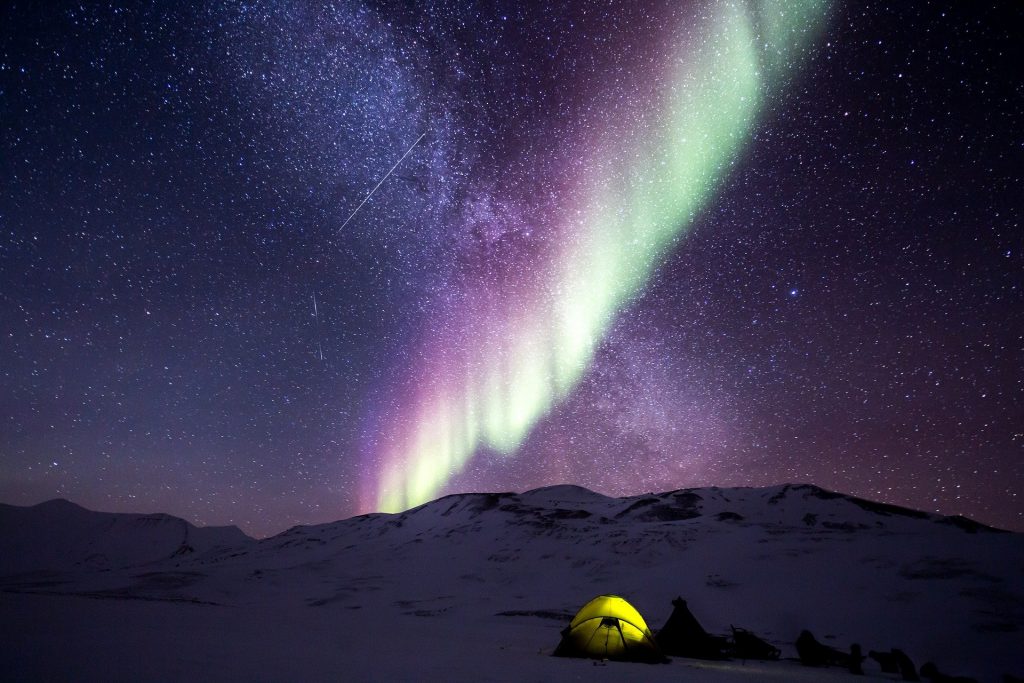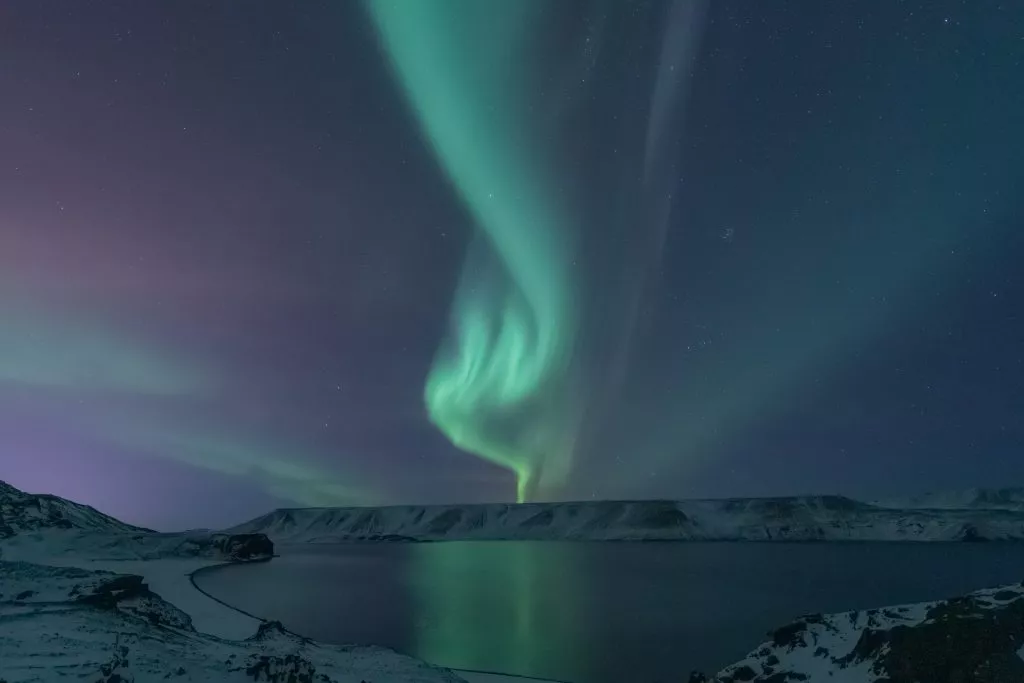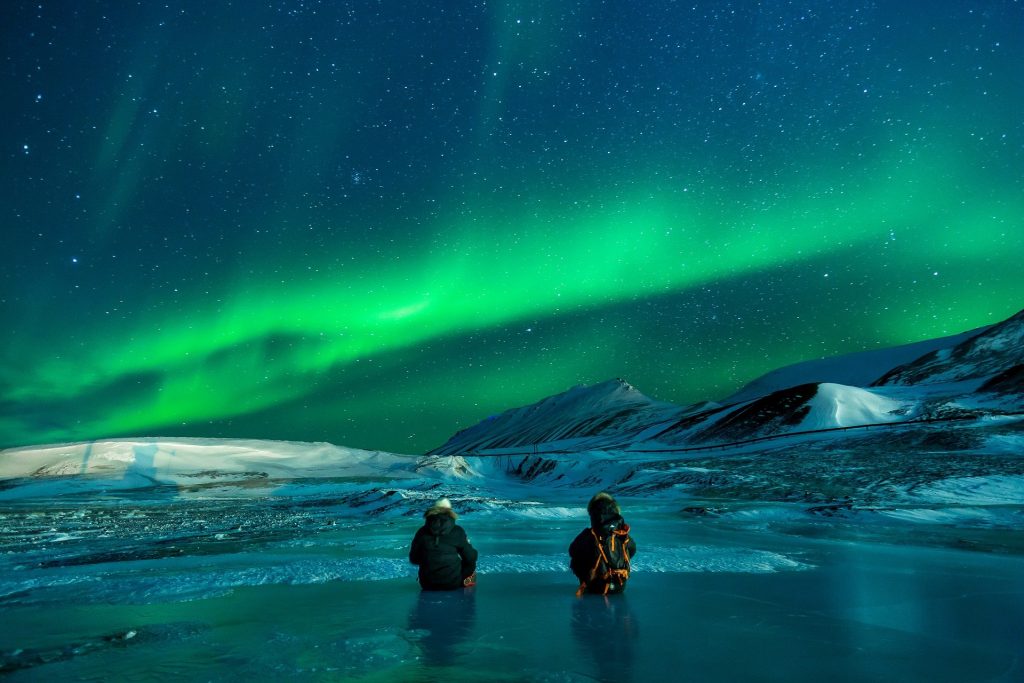The Northern Lights, one of several astronomical phenomena called the aurora borealis (aurora borealis), are shafts or curtains of colored light occasionally visible in the night sky.
The Northern Lights (Aurora) are a natural phenomenon found in both the northern and southern hemispheres that can truly inspire awe. The Northern Lights is also called by its scientific name - Aurora borealis, and the southern aurora is called the northern aurora.
Sten Odenwald, author of The 23rd Cycle: Learning to Live with a Storm Star (New York, Columbia University Press, c2001), provides insight into how the northern lights are generated:
The origin of the aurora begins on the surface of the sun, when solar activity ejects a cloud of gas. Scientists call this a coronal mass ejection (CME). If one of them reaches the earth, taking about 2 to 3 days, it collides with the Earth's magnetic field. This field is invisible, and if you could see its shape, it would make the Earth look like a comet with a long magnetic "tail" extending a million miles behind the Earth in the opposite direction from the sun.
When the coronal mass ejection collides with the magnetic field, it leads to complex changes in the magnetic tail region. These changes generate currents of charged particles that then flow along lines of magnetic force in the polar regions. These particles are energized in the Earth's upper layers, and when they collide with oxygen and nitrogen atoms, they produce a dazzling auroral light.
Odenwald further tells us: "The aurora is beautiful, but the invisible streams of particles and magnetism going on at the same time can damage our power grid and satellites operating in space. This is why scientists are so interested in understanding the physics of auroras and solar storms so that we can predict when our technologies may be affected. "
Can I see them somewhere?

Yes, although they are more common at higher latitudes and places like Alaska, Canada and Antarctica, closer to Earth's poles. Sometimes they have been seen closer to the equator and even as far south as Mexico. To see them, look in the direction of the nearest pole (the northern horizon in the northern hemisphere, the southern horizon in the southern hemisphere).
Can I see the Northern Lights at any time of the year?
Yes. In some areas, such as Alaska or Greenland, they can be seen most nights of the year. And they appear at any time of the day, but we cannot see them with the naked eye unless it is dark.

What causes colors and patterns?
The colors and patterns are from the types of ions or atoms that become energized when they collide with the atmosphere and are affected by magnetic lines of force. Displays can take many forms, including wavy curtains, pulsating globes, traveling pulses, or constant glows. Altitude affects colors. Blue violet/red occurs below 100 miles (60 km), with the strongest bright green between 100-140 km (60-150 miles). Above 240 miles (240 km) appear ruby red.
Interesting facts about the Northern Lights
Auroras have been observed since ancient times.
The altitude of the displays can reach up to 1000 km (620 mi), although most are between 80-120 km.
The auroras are more frequent and more spectacular during periods of high solar activity, which cycle for approximately eleven years.
Some displays are particularly spectacular and widespread. Examples include severe storms of August-September 1859, February 11, 1958 (1,250-mile-wide lights circling the Arctic from Oregon to New Hampshire), and March 13, 1989 (entire sky turning bright red and aurora visible in Europe and North America as far south as Cuba).
Northern cultures abound in legends that explain the northern lights. Some North American Inuit call the glow aqsarniit ("football players") and say that the spirits of the dead play football with the head of a walrus. Often, legends warn children that lights can fall and grab them.

June 1896 Norwegian Christian Birkeland, "the father of modern aurora science," proposed the theory that electrons from sunspots trigger the aurora borealis.
Yellowknife (Northwest Territories, Canada) is the aurora capital.
The earliest known account of the northern lights appears to be from a Babylonian clay tablet of observations made by the official astronomers of King Nebuchadnezzar II, 568/567 BCE.
Some people claim to hear noises associated with the northern lights, but no such phenomenon has been documented.






Facebook Comments